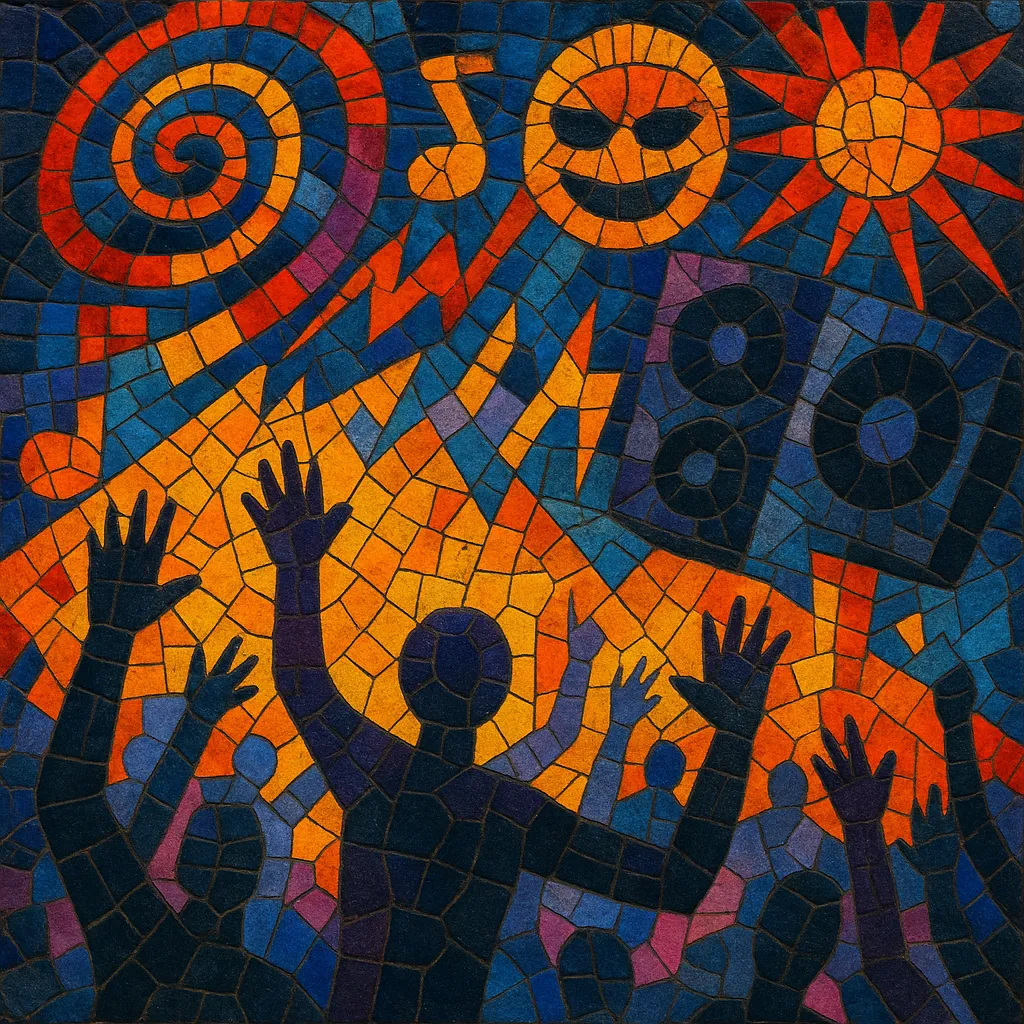Rave is a high-energy electronic dance music style and party culture that crystallized in the late 1980s in the United Kingdom, growing out of acid house nights and warehouse parties. Musically, it emphasizes relentless dance-floor momentum, big breakdowns and drops, bright "rave stabs" and hoover leads, chopped breakbeats or four-on-the-floor kicks, and euphoric vocal samples.
While the word "rave" refers to the broader culture of all-night events, the genre tag often points to the early 1990s UK sound sometimes called hardcore rave or breakbeat hardcore: uptempo BPMs, Amen/Think breaks, 808/909 drums, M1 piano riffs, diva hooks, sirens, and airhorns. The mood ranges from ecstatic and communal to dark and intense, with DJ-friendly structures designed for long blends and peak-time rushes.
Rave culture coalesced in the United Kingdom during the late 1980s, as acid house from Chicago and Detroit techno arrived via DJs, import shops, Balearic clubbing, and UK pirate radio. Early parties moved from clubs to fields and warehouses, where a DIY sound system ethos met a burgeoning youth counterculture.
In 1988–89, acid house nights and outdoor parties exploded in popularity around London and the M25 corridor. The term "rave" became shorthand for these ecstatic, all-night gatherings, where DJs mixed house, techno, electro, and early breakbeat tracks for massive crowds.
By 1990–1993, a distinct UK rave sound formed—often called hardcore rave or breakbeat hardcore. Producers fused four-on-the-floor kicks with hip hop-derived breaks, pitched-up diva samples, M1 piano riffs, hoover leads, and dramatic breakdowns. Labels and white-label culture spread tunes quickly, while pirate radio nurtured local scenes.
Authorities responded with policing and the 1994 Criminal Justice and Public Order Act, which targeted unlicensed gatherings playing "repetitive beats." As large illegal raves declined, the sound splintered: jungle and later drum and bass emphasized breakbeats and bass pressure; happy/UK hardcore pushed euphoric tempos; big beat and trance adapted rave euphoria to different club contexts; legal superclubs and festivals carried the aesthetic into mainstream dance culture.
Rave aesthetics—hands-in-the-air hooks, peak-drop arrangements, MC culture, and communal dance-floor rituals—influenced scenes across Europe and beyond. Its sonic DNA echoes in modern drum and bass, UK garage lineage, trance, big beat, and periodic revivals like "new rave," while the DIY, sound-system-driven ethos continues to inform contemporary electronic music events.


